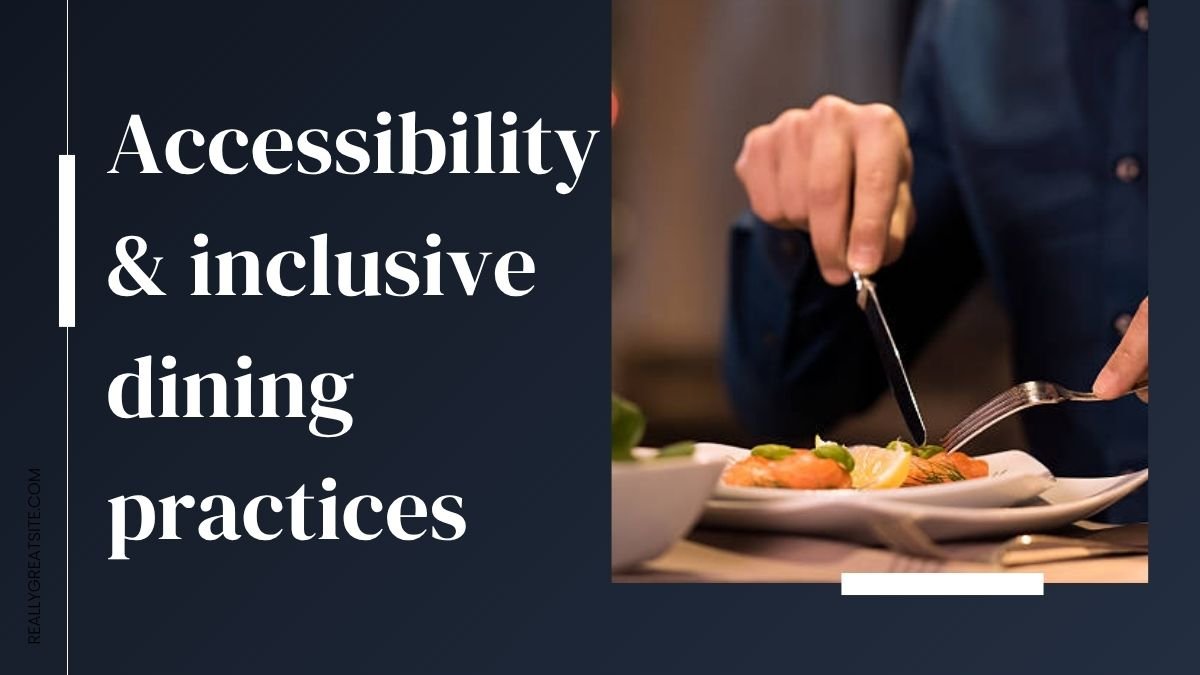In today’s fast-paced life, eating out has become a common social practice. Whether it’s a casual dinner with friends, a weekend lunch with family, or eating out for a special occasion—restaurants have become a part of our everyday culture. In a country like Australia, where diversity and inclusiveness are considered as core values of society, ensuring an equal experience for people with disabilities becomes extremely important.
However, the ground reality is a little different. Around 4.3 million people in Australia are living with some form of disability. Most of these people lead an active lifestyle, work and want to fully participate in society. But when it comes to eating out, these people often find themselves marginalized due to physical accessibility, communication difficulties and sensory difficulties. This not only means inconvenience, but also that they are not able to fully participate in their society.
Physical accessibility: A basic need that cannot be overlooked
When a person decides to visit a restaurant, the first thing that comes to mind is accessibility. This can be very difficult for persons with disabilities. Most restaurants still have entrances that have stairs, doorways that are too narrow, and tables that are not spaced enough, making movement difficult for people in wheelchairs or walkers. Restaurant owners need to understand that an inclusive design not only facilitates customers with disabilities but also attracts their family and friends, thereby increasing business.
Apart from this, parking arrangements are also an important issue. It is important to have “accessible parking spaces” in sufficient numbers and close to the restaurant. Also, ramps should be constructed with proper slopes and grips so that wheelchair users can enter without any help.
Accessibility to washrooms and facilities inside the restaurant is also very important. Washrooms with wide doors, hand grab bars, sinks at the right height, and soap dispensers are essential for persons with disabilities. Additionally, elements such as Braille signboards and good lighting enhance the experience.
Communication barriers: Service is incomplete without communication.
An important part of service in restaurants is customer communication. When customers have difficulty expressing their preferences, asking questions or making special requests, the experience can be poor. This communication process becomes especially challenging for people with hearing impairment or speech impairment.
The most effective way to overcome this challenge is to train staff in communication techniques for people with disabilities. For example, many large restaurants in Australia are now training staff in Australian Sign Language (Auslan). In addition, technology such as icon-based menus on digital tablets, online ordering systems and text communication options gives customers independence.
Staff attitudes and behavior also make a big difference. When staff are helpful, smile and listen patiently, customers feel a sense of dignity. Conversely, if staff behave insensitively or misinterpret disability out of ignorance, this can discourage customers. Therefore, restaurant management should implement mandatory sensitivity and inclusivity training.
Sensory sensitivity: every sound, every light, every smell matters.
Not all disabilities are visible. People with conditions such as autism, dementia, and PTSD can be greatly bothered by loud noises, bright lights, crowding and strong smells in restaurants. This condition is known as ‘sensory overload,’ which can make a person feel uncomfortable, anxious and distressed.
In Australia, some restaurants are now realizing this and have introduced ‘sensory-friendly zones.’ For example, some establishments have special “quiet hours” where the lights are dimmed, the music is turned off, and the atmosphere is quiet. Additionally, some restaurants have provided sensory kits that contain fidget tools, noise-cancelling headphones and visual communication cards.
Initiatives such as the “KultureCity Sensory Inclusive™” certification are being implemented internationally. This is an inspiration for Australia to train and prepare its food and hospitality sector in this direction.
Benefits of being inclusive for restaurants
It’s not just a matter of social responsibility—inclusivity for people with disabilities is also a business opportunity for restaurants. In Australia, people with disabilities have an annual spending power of over $20 billion. If restaurants cater to their needs, they can attract not only these customers but also their family and friends.
In addition, the positive image of an inclusive restaurant gets shared on social media, boosting brand reputation and attracting new customers. Today’s generation values not just taste but also values and ethics.
Conclusion: An Australia where everyone is welcome
The most effective way to mainstream people with disabilities, not marginalize them, is to make every part of society compatible with them. Restaurants can play a very effective role in this direction because they are not only centers of social gatherings but also symbols of equality and dignity.
Australia should transform its restaurants into places that serve delicious food and instead make them symbols of diversity and inclusiveness. This will not only respect people with disabilities but also make the entire society more humane and mature.
Inclusiveness is not a choice but an imperative. And food tastes best when it is shared—when it is spiced with equality and dignity.
